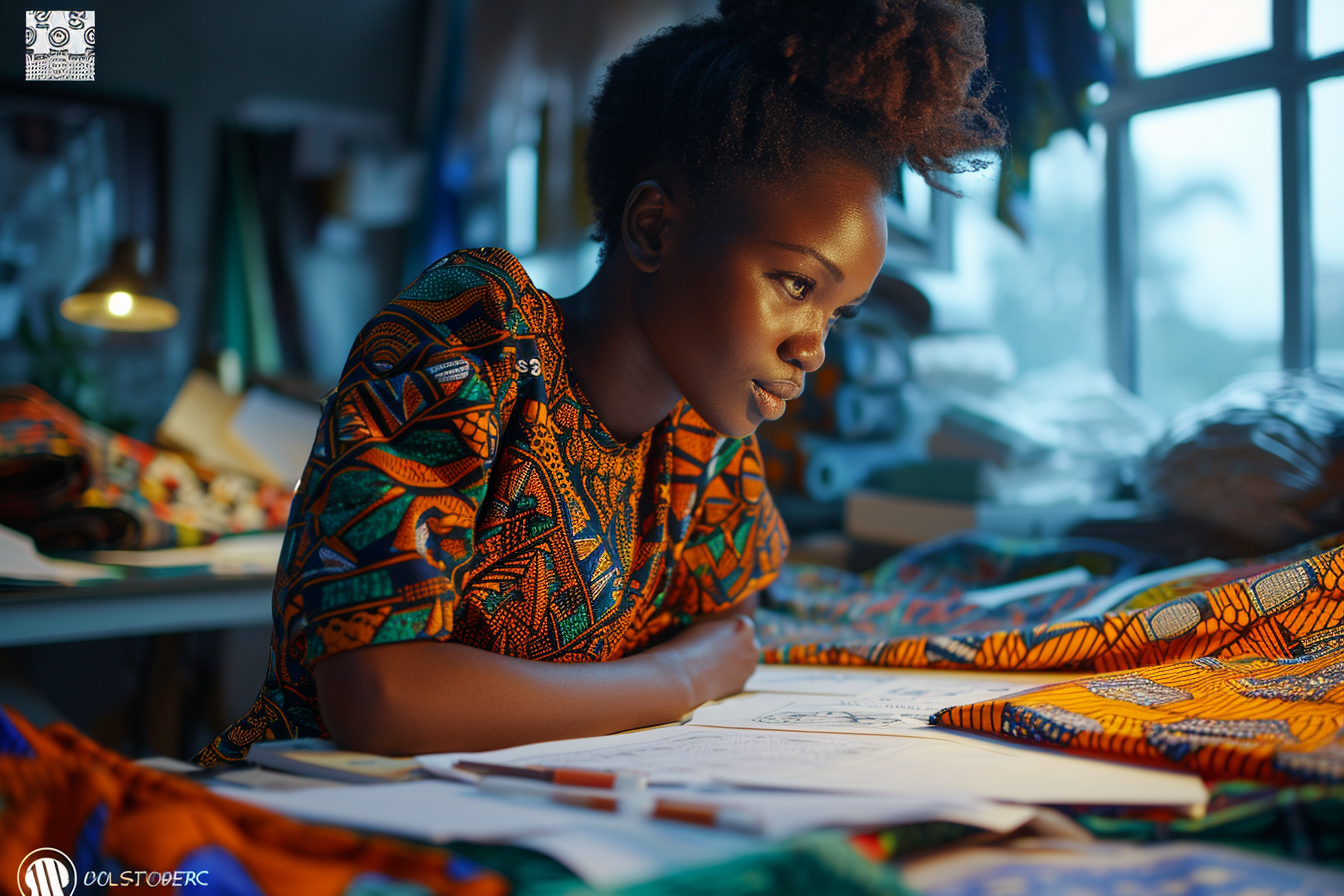The world of African fashion is rich and diversified, testifying to a cultural heritage that is just waiting to be highlighted on the international stage. Nevertheless, African designers face major challenges when they aspire to shine on the catwalks of haute couture. While the recognition of their work and the valorization of their creations are crucial, they also have to navigate through a labyrinth of logistical and economic obstacles that can hinder their emergence. What’s more, integration into a market mainly dominated by Western brands represents another hurdle to overcome, requiring adapted strategies and unfailing resilience.
Recognizing and promoting African heritage
Theascent of African designers to the catwalks of haute couture can be likened to a veritable epic, as the path to deserved recognition is strewn with pitfalls. The main one lies in the ability to distinguish oneself not only through originality, but also through the valorization of a rich and multifaceted cultural heritage. These designers infuse their collections with the very essence of African traditions, with ancestral know-how handed down through the centuries. However, making this heritage shine in a largely Westernized industry represents a colossal challenge.
Painting the richness of Africa on luxury canvases requires audacity and perseverance to transform endogenous textiles such as wax, bogolan or Madagascan mulberry silk into the jewels of contemporary fashion. When you consider how each pattern, color or cut can tell a story, divulge a tradition or celebrate an age-old ritual, you can better appreciate the narrative potential these artists bring to the world of haute couture.
Ensuring that these cultural references are perceived as enrichment rather than otherness remains at the heart of the concerns of designers such as Alphadi, Imane Ayissi and Adama Paris. The latter tactfully and elegantly defy stereotypes to shape a greater receptivity among an international audience often unfamiliar with this stylistic luxuriance. Bringing together artisans and textile experts, they work tirelessly to forge links between Western modernity and African authenticity.
The challenges for African designers don’t stop there: there’s also the overriding ambition to see African motifs treated with the same respect as any other major European or American label. The sophisticated pieces resulting from these cross-fertilizations transcend the divide and carry high the values of a continent often under-represented in the hushed milieu of haute couture.
Logistical and economic obstacles are challenges for African designers
Behind the glamour and abundant creativity of African designers lie considerable logistical and economic challenges. Striking the right balance between traditional, often time-consuming craftsmanship and the ruthless realities of the haute couture market is no mean feat for these designers. The production chain, in particular, represents a daily headache: quality materials from the continent can be difficult to source on a regular basis due to sometimes insufficient infrastructure. What’s more, transporting collections to international fashion capitals not only requires rigorous logistics, but also generates considerable additional costs.
At the heart of this economic issue is the question of financing. Financial support is crucial if designers are to fully express their talent on the world stage. Yet investment can be hard to come by, especially in an industry that still has reservations about luxury “made in Africa”. In the face of these financial and organizational pitfalls, some designers demonstrate remarkable ingenuity in transforming these constraints into strengths, distinguishing their work by its originality and resilience.
The economic hurdle is not limited to production, however; it also involves the challenge of gaining access to prestigious sales platforms. Establishing a foothold in renowned outlets or participating in key events requires a considerable investment, which can discourage or dampen the initial creative impetus. Despite this, many of these visionaries persevere with determination to make their way onto the glittering catwalks of the world.
Integration into a market dominated by the West
The advent of African talent on the international haute couture scene is no less fraught with pitfalls, given the predominance of the West in this sector. Every day, the continent’s designers face the colossal challenge of entering and asserting themselves in an arena that has long relegated the richness and diversity of African creative expression to the background. Recognition is not automatic: it requires strategy and perseverance.
African fashion houses aspire to transmute their cultural heritage into avant-garde pieces that fuse age-old traditions with modern sensibilities, aiming to captivate both a local audience and a discerning international one. This shift from a local context to a global theater implies a deep understanding of the stylistic nuances and varied expectations of consumers across continents.
This work of integration requires creative flexibility and a remarkable ability to adapt: the identity of African designers must often be subtly balanced with universal aesthetic desires. The slightest misstep can lead to a misunderstanding of the designer’s intention or, worse still, to stylistic fragmentation. Nevertheless, the growing presence of African professionals at Paris, Milan and New York fashion weeks bears witness to a positive evolution, a sign that once-closed doors are slowly but inevitably beginning to open.
But despite these advances, designers still have to fight daily to ensure that their art is not just perceived as an exotic phenomenon or a passing trend, but recognized for its intrinsic value, innovation and legitimate contribution to the world’s fashion design heritage. It is therefore with rigor, ingenuity and unwavering commitment that these designers continue to expand the global artistic panorama, nurturing their ambitions while delighting the world with their sartorial singularity. The challenges facing African designers are many, but they do not alter the unshakeable determination of these creative entrepreneurs.
We recommend these other pages:
- Is African fashion represented on international catwalks?
- Which haute couture designers have been inspired by African fashion?
- Is African fashion well received on haute couture catwalks?
- Which African garments are the most popular on haute couture catwalks?
- Are there any specific events dedicated to African fashion in haute couture?

